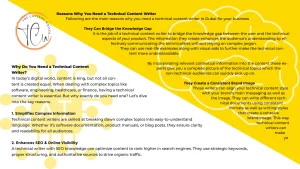With a content strategy in place, the first thing you might’ve done is set up long-form blog content on your brand’s website.
Needless to say, blogs are the foundation of website SEO and the amount of traffic you get from blogs is directly proportional to their value.
That being said, people are drawn more to different types of content than just blog posts. Short form video content in the form of Instagram Reels, TikTok and YouTube Shorts has taken a larger chunk of user attention.
Despite being a video-sharing platform, YouTube has become the second most popular search engine.
All this means that your content strategy should not be limited to blogs – It should be spread across all platforms as various kinds of content. But how can you turn your blogs into other content forms? This blog answers that and a lot more.
So let’s begin!
Table of Contents
What is Content Repurposing?
Why Repurpose Content?
How to Find the Right Content to Repurpose
How to Repurpose Blogs for Social Media
How to Repurpose Blog Posts into Ebooks
Final Thoughts
What is Content Repurposing?
Content repurposing, also known as content recycling, is taking existing content and transforming it into a different format to increase its exposure and lifetime.
This does not mean you can share a blog post to your brand’s LinkedIn page by simply changing its description and calling it content repurposing. You need to update the content and make it relevant for the particular platform, in this case, LinkedIn. Otherwise, your audience would certainly see your brand as lazy.
Similarly, you shouldn’t take a news article from a competitor and edit it to suit your brand image. (Although this sounds like repurposing, it is actually plagiarism)
In content repurposing, you shouldn’t be repetitive, you must use the content you’ve purposely created earlier, and then give it a new life by editing it in every way possible to fit the new platform you wish to share it. The ultimate goal should be to give value to your audience.
But why do this? Why make the effort to repurpose content? Let’s look at the advantages of content repurposing:
Why Repurpose Content?
The whole point of repurposing content is to save time and in turn money.
Coming up with ideas, finding data to back them up, and turning those ideas into easily digestible content is no easy task. It gobbles time and money.
So when you repurpose content, you’re essentially saving yourself time.
Apart from that, content repurposing is also a smart strategy to boost your content marketing performance. By repurposing content, you can:
- Increase your reach:
By creating different formats and types of content from your original piece, you can attract more people who have different preferences and needs.
For example, some people may prefer to watch a video than read a blog post, or vice versa. Content repurposing allows you to meet your audience where they are and increase your visibility and exposure. - Improve your SEO:
By publishing more content on various platforms and channels, you can improve your search engine optimization and rank higher on Google.
Search engines value websites that have diverse and relevant content that provides value to the users. Repurposing helps you create more backlinks, authority, and traffic to your website. - Reinforce your message:
By repeating your core message in different ways and contexts, you can make it more memorable and persuasive to your audience.
Marketing’s Rule of 7 says that your customer needs to hear your message seven times before they buy. This is why you should increase the chances of your message being heard and understood by your audience. - Diversify your content:
By producing different formats and types of content, you can make your content more engaging and dynamic.
Different formats and types of content can appeal to different emotions, senses, and learning styles of your audience.
By repurposing content, you can cater to the diverse needs and preferences of your audience and make your content more appealing and interesting.
How to Find the Right Content to Repurpose
Not all content is suitable for repurposing. Some content may be outdated or irrelevant. To avoid wasting your time and resources, you need to select the right content to repurpose. Here are some criteria to help you do that:
- Evergreen:
Evergreen content remains relevant and valuable for a long time, regardless of changes in trends or seasons.
For example, a blog post on “How to Keep Your Property Maintenance Free” is evergreen, while a blog post on “The Best Painting Ideas of 2023” is not. Evergreen content is ideal for repurposing because it has a long shelf life and can attract consistent traffic and engagement. - High-performing:
High-performing content is content that has achieved your desired goals, such as generating traffic, engagement, conversions, or revenue.
For example, a blog post that ranks high on Google gets a lot of social shares or drives a lot of leads is high-performing. High-performing content is ideal for repurposing because it has proven to be interesting and valuable to your audience. - Relevant:
Relevant content is content that aligns with your current brand, audience, and goals.
For example, a blog post that reflects your current products, services, or values is relevant, while an outdated or off-topic blog post is not. Relevant content is ideal for repurposing because it supports your current content strategy and message.
How to Repurpose Blogs for Social Media
Blogs are a great source of content for social media, as they provide valuable information and insights for your audience.
However, you cannot simply copy and paste your blog content to social media and expect the same results. You need to adapt your blog content to the specific features and best practices of each social media platform.
Here are some tips and examples on how to create social media posts from blogs for different platforms:
- Instagram:
Instagram is a visual platform that favours eye-catching and engaging images and videos, with a higher preference for videos these days. To create social media posts from blogs for Instagram, you can:
- Turn your blog post into a carousel post by selecting up to 10 images that illustrate the main points of your blog post. Each image should encourage the user to swipe to the next image. You can give information in the form of breadcrumbs to do this.
- Write a catchy and concise caption that summarizes the main point of your blog post and includes relevant hashtags.
- Turn your blog post into an Instagram reel by creating a short video (up to 60 seconds) that showcases the main idea of your blog post.
- Instagram has built-in editing tools to add music, effects, stickers, and text. However, to make things more interesting, you can use professional video editors like Adobe Premiere Pro.
- Write a captivating caption that teases the topic and includes relevant hashtags. Add a call to action to invite your followers to watch the full video on YouTube and use the link in the bio feature.
- Turn your blog post into a carousel post by selecting up to 10 images that illustrate the main points of your blog post. Each image should encourage the user to swipe to the next image. You can give information in the form of breadcrumbs to do this.
- X (Twitter):
X or Twitter is primarily a micro-blogging platform that favours short and snappy messages. To create social media posts from blogs for Twitter, you can:
- Turn your blog post into a Twitter thread by breaking down your blog post into bite-sized tweets (up to 280 characters each) that cover the main points of your blog post.
- Use emojis, GIFs, images, or videos to make your thread more engaging.
- Write a witty and concise tweet that teases the main idea of your blog post and includes relevant hashtags. Add a call to action to invite your followers to retweet (repost).
- Turn your blog post into a Twitter thread by breaking down your blog post into bite-sized tweets (up to 280 characters each) that cover the main points of your blog post.
- LinkedIn:
LinkedIn is a professional platform that favours relevant and informative content. To create social media posts from blogs for LinkedIn, you can:
- Turn your blog post into a PDF carousel post by creating a PDF document that contains the key information and visuals from your blog post.
- Write a compelling and informative caption that highlights the value and benefits of your blog post and includes relevant keywords.
- Add a call to action to encourage your connections and followers to share the carousel or better, urge them to add their ideas to your post in the comments section.
- Turn your blog post into a PDF carousel post by creating a PDF document that contains the key information and visuals from your blog post.
- YouTube:
YouTube favours entertaining and educational content. To create social media posts from blogs for YouTube, you can:
- Turn your blog post into a YouTube script by writing a clear and engaging script that covers the main points of your blog post.
- Record a high-quality and captivating video using your script as a guide.
- Use a feature-rich video editor like Adobe Premiere Pro or DaVinci Resolve to add effects, music, subtitles, and thumbnails.
- Write a descriptive and keyword-rich title and description that explain what your video is about and why your viewers should watch it.
- Add a call to action to invite your subscribers to watch and like your video and use the end screen and card features to link to your blog post.
- Turn your blog post into a YouTube script by writing a clear and engaging script that covers the main points of your blog post.
- Facebook:
Facebook favours community and engagement.
To create social media posts from blogs for Facebook, you can:
- Edit your YouTube video into a 1:1 format that is fit for Facebook viewers by adding your video to a square shape with white space on the top and bottom. This will make your video more visible and appealing on Facebook’s news feed.
- The header and footer of the 1:1 video (that is the white space), can be used to add text in bold and large font. This text must be different from the heading but should be tempting enough to watch the video.
- Write a friendly and conversational caption that tells a story or asks a question related to your blog post and includes relevant emojis. Add a call to action to invite your audience to comment on the video.
- Edit your YouTube video into a 1:1 format that is fit for Facebook viewers by adding your video to a square shape with white space on the top and bottom. This will make your video more visible and appealing on Facebook’s news feed.
How to Repurpose Blog Posts into Ebooks
Ebooks are long-form digital books that provide in-depth information or guidance on a topic. They are a popular medium for content marketing, as they can help you establish your authority, generate leads, and increase your revenue.
You can repurpose blog posts into ebooks by following these steps:
- Select the blog posts:
Choose the blog posts that are evergreen, high-performing, and relevant to your ebook topic. You can use tools like Google Analytics or Ahrefs to find your most popular and engaging blog posts.
You can also use your blog categories, tags, or keywords to filter your blog posts by topic. You can either use one blog post as the basis for your ebook or combine multiple blog posts into a cohesive ebook. - Organize the content:
Arrange the blog posts in a logical order that follows a clear structure and flow. You can use a tool like MindMeister or XMind to create a mind map or an outline of your ebook content.
You can also use a tool like Trello or Asana to create a project board or a task list of your ebook content. You can add, delete, or edit the blog posts as needed to fit your ebook structure and length. - Format the ebook:
Design and format your ebook to make it aesthetic and easier to read. You can use a tool like Canva or Piktochart to create a cover, a table of contents, and a layout for your ebook.
You can choose the file format (e.g., PDF, EPUB, MOBI, etc.) and the size (e.g., A4, letter, etc.) of your ebook according to your preferences and goals. - Publish and promote the ebook:
Publish and distribute your ebook to your target audience and platforms. You can use a tool like BookFunnel or Gumroad to deliver your ebook to your subscribers or customers.
You can also use a tool like Amazon Kindle Direct Publishing or Google Play Books to sell your ebook on online platforms.
You can promote your ebook on your website, blog, social media, email, or other channels to generate interest and traffic.
Final Thoughts
To sum it up, content repurposing is a game-changer for optimizing your digital presence. By transforming existing content into diverse formats, you unlock the opportunity for broader reach, enhanced SEO, and stronger messaging.
It’s a strategic move that not only saves time but also aligns with the changing preferences of your audience across various platforms.
As you begin repurposing your content, remember to adapt your content to each platform’s unique demands, and watch your impact soar. It’s not just about saving time; it’s about maximizing the value of your content in the digital landscape. If you don’t have the time to do all this, hire a dedicated content writing service like The Content Writer. We can help you write blog posts, and repurpose your old blogs into something entirely new. Give us a call today.




